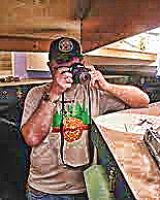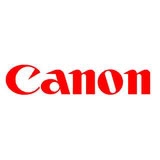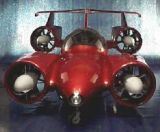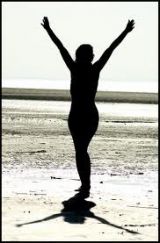- Forum
- General Discussion | Introductions | Off Topic Forum
- Photography General Discussion
- Photographing artwork that is behind glass?
Photographing artwork that is behind glass?
-
 Topic Author
Topic Author
- Moossmann
- Photography Hooked
-
- Nikon D850 and Sony a6500
- Followers: 132
- Posts: 861
-
Points:
3524
Post #164555
-

- Stealthy Ninja
- Moderator
-
- Fuji X stuff and a 1DsIII for some reason
- Followers: 982
- Posts: 16300
-
Points:
6837
Post #164563
Tripod to keep it steady (a polarizer also acts as a ND filter, so be aware of that).
50mm is fine (as Joves said).
-

- Justin Black
- Vendor
- Nikon: D810; Fuji: X100s, X-Pro1, XE-2
- Followers: 100
- Posts: 39
-
Points:
2001
Post #164583
Moossmann wrote: Hey guys,
What sort of set up do you recommend when shooting artwork and museum pieces that are behind glass? I'm guessing shooting with any sort of flash is going to be out of the question?
Ethan
I'm assuming you are talking about flat art, and that you have control over the lighting. In that case, the best approach is two lights, either strobes or hot lights, positioned at a 45-degree angle (or thereabout) to the surface, with polarizing gels over the lights and a polarizing filter on the camera. That will ensure elimination of reflection and specular highlights.
Lighting 3D art is almost an art in itself.
Justin Black
Visionary Wild – workshops and travel for the passionate photographer
visionarywild.com
-

- MajorMagee
- Photography Hooked
-
- E-PL1, E-PL2, E-PM1, E-P5
- Followers: 13
- Posts: 739
-
Points:
0
Post #164604
-

- Stealthy Ninja
- Moderator
-
- Fuji X stuff and a 1DsIII for some reason
- Followers: 982
- Posts: 16300
-
Points:
6837
Post #164643
MajorMagee wrote: Most museums will throw you out if you even think about using a flash.
No point, it would just reflect all over the glass.
-

- Farestad
- Snapobsessed
-
- Canon 1D Mark II
- Followers: 92
- Posts: 376
-
Points:
2543
Post #164671
But the glass on art works is right up to the painting...
EF 50mm f/1.4
EF 35mm f/1.4L USM
EF 100mm f/2
EF 70-200mm f/4
EF 18-55mm
EF 85mm f/1.8 USM
-

- Indy 001
- New Kid On The Block
-
- Nikon D7000
- Followers: 4
- Posts: 50
-
Points:
0
Post #164778
Moossmann wrote: Hey guys,
What sort of set up do you recommend when shooting artwork and museum pieces that are behind glass? I'm guessing shooting with any sort of flash is going to be out of the question?
Ethan
Are you speaking about shooting in a museum? or just shooting artwork that would be in a museum, but you can bring into your own studio.
Shooting in a museum, you probably can not use a tripod or flash (plus flash will give a reflection. Try using a Polarizer.
If not shooting in a museum, but shooting in a studio. Place lights around the artwork, do not use your camera flash, place camera on tripod and shoot straight on, and try not to get any of the lights reflecting.
-

- Henry Peach
- Apprentice
-
- I currently use a 5DII or Sony Nex-3 most of the time.
- Followers: 50
- Posts: 2925
-
Points:
16
Post #164797
Post #164922
If that's the case you'd probably need to check on the policies since museums may not allow photographs to be taken, or have guidelines for camera usage (as they do for food & drinks, bags & backpacks, etc.) They may allow photographs of their collection but not of special or travelling exhibits and typically don't allow a flash or tripods/monopods.
If photographing the artwork is allowed maybe try moving and changing the vantage point to change where reflections hit the glass. It would depend on the lighting and where and how the art is displayed if you could eliminate reflections altogether (if you can figure out a position to shoot from where you aren't getting any reflection) and I'd think a polarizer could be an option.
Sharon
-

- Carlos
- Photography Hooked
-
- (2) Canon 7D's
- Followers: 83
- Posts: 517
-
Points:
2591
Post #165035
Henry Peach wrote: If you are setting up your own lighting you need to learn about the family of angles to assess how to place light sources so they won't cause reflections. An excellent resource is the book "Lighting, Science and Magic".
(2) Canon 7D, Canon 18-55mm f/3.5-5.6 IS, 17-55 f/2.8 IS USM, 50mm f/1.4 USM, 85mm f/1.8 USM, Sigma 70-200mm f/2.8 HSM, Sigma 10-20mm f/4-5.6
-

- Stealthy Ninja
- Moderator
-
- Fuji X stuff and a 1DsIII for some reason
- Followers: 982
- Posts: 16300
-
Points:
6837
Post #165154
Henry Peach wrote: If you are setting up your own lighting you need to learn about the family of angles to assess how to place light sources so they won't cause reflections. An excellent resource is the book "Lighting, Science and Magic".
Or just move it to the sides...
-

- Joe Photo Daddy
- Lone Wolf
- D80
- Followers: 71
- Posts: 237
-
Points:
467
Post #165207
- Forum
- General Discussion | Introductions | Off Topic Forum
- Photography General Discussion
- Photographing artwork that is behind glass?
Latest Reviews
The Panasonic G9 II is a 25.2-megapixel micro four thirds camera with numerous features that make it punch out of its weight class, like 779 AF points, 5.8K video, and weather sealing.
The Fujifilm XT5 is a 40MP mirrorless camera capable of 6.2K video at 30p. With those specs, it’s an ideal choice for photographers needing a camera to pull double duty for imaging and video.
The Canon EOS R100 is an entry-level mirrorless camera introduced in 2023. But just because it’s an entry-level camera doesn’t mean it’s a bare-bones camera. Find out why in this review!
Nikon’s retro-looking Nikon Zfc is anything but retro. Under its classic body is a host of features and amenities that make it a worthwhile compact mirrorless camera for 2024.
Forum Top Posters
-
1TCav 6 posts
-
2Ruby Grace 4 posts
-
3Scotty 3 posts
-
4Street Shark 3 posts
-
5Chris Briggs 2 posts
-
6Sassy Girl 2 posts
-
7Carter Gledhill 2 posts
-
8amirahusse... 2 posts
-
9Esseff 2 posts
-
10Colorado Mike 2 posts
Latest Articles
The Panasonic G9 II is a 25.2-megapixel micro four thirds camera with numerous features that make it punch out of its weight class, like 779 AF points, 5.8K video, and weather sealing.
Cinematic photography is an interesting genre that combines photographic and videographic skills along with effective storytelling techniques. The result? Highly impactful images!
Newborn photography requires skill, the right gear, and a lot of patience. This beginner’s guide discusses critical topics that will help you be more prepared for before, during, and after the shoot.
To fill the frame means to expand the footprint of the subject in your shot. Get in close, zoom in, crop the image, or use other techniques to bring the subject to the forefront.
With these simple yet effective beginner photography tips, you can avoid some of the common mistakes beginners make and get improved results with your images.
Urban photography is a genre showcasing features in urban settings. You can photograph people, architecture, mass transit, and many other subjects. Learn how to do so in this guide!
The Nikon D850 might be an older DSLR, but it was ahead of its time when it debuted in 2017. That means it still has plenty of firepower to compete with today’s powerful mirrorless cameras.
The best beginner camera isn’t the same for everyone. That means having choice is of the utmost importance. In this guide, explore five excellent beginner camera options for 2024 and beyond.

















